Parallax creates enchanting cinematic movement by tapping into your brain's natural depth perception. As the camera moves, foreground elements shift faster than the background, mimicking how your eyes process real-world motion. This effect engages your peripheral vision and spatial awareness, immersing you in a three-dimensional world on a flat screen. It guides your focus subtly, revealing or concealing information to enhance the visual narrative. Filmmakers use parallax to add depth, create illusions of space, and manipulate your emotional engagement. From simple tracking shots to complex drone maneuvers, parallax techniques can transform ordinary scenes into visually stunning experiences. Exploring these methods opens up a world of cinematic possibilities.
Defining Parallax in Cinematography
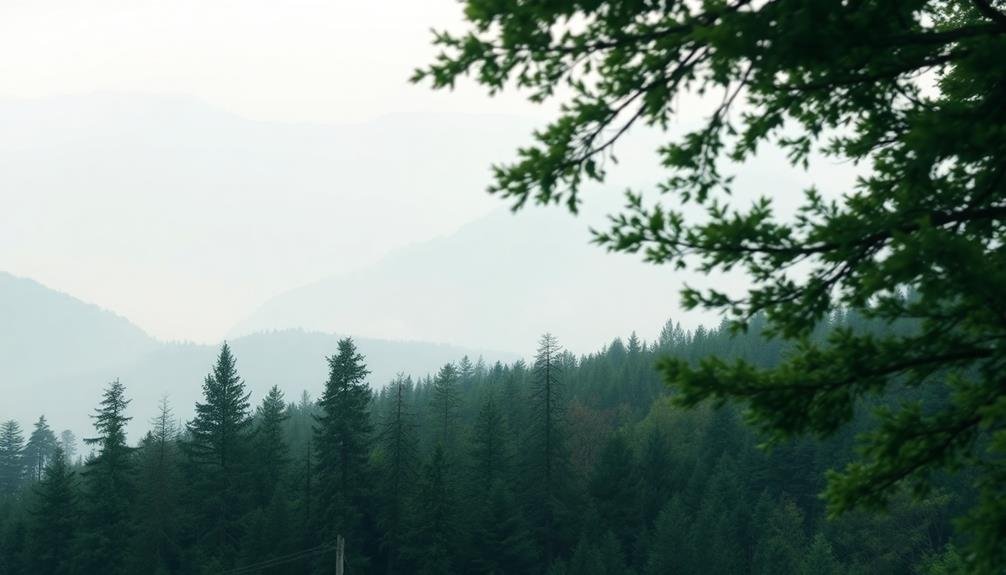
In the world of cinematography, parallax refers to the apparent change in position of an object when viewed from different angles. This visual phenomenon occurs when you move the camera, causing foreground and background elements to shift at different rates. The closer objects appear to move faster than those in the distance, creating a sense of depth and dimensionality in the frame.
You'll often see parallax used in tracking shots, where the camera moves laterally or vertically. As it glides, you'll notice how objects at varying distances seem to move at different speeds. This effect mimics how our eyes perceive motion in real life, adding a layer of realism to the cinematic experience.
Parallax isn't just about creating depth; it's a powerful tool for directing the viewer's attention. By manipulating the relative movement of objects, you can guide the audience's focus to specific areas of the frame.
It's also used to reveal or conceal information, build tension, and enhance the overall visual narrative. Understanding and mastering parallax is essential for cinematographers aiming to create dynamic and engaging visual storytelling.
The Psychology Behind Parallax Movement
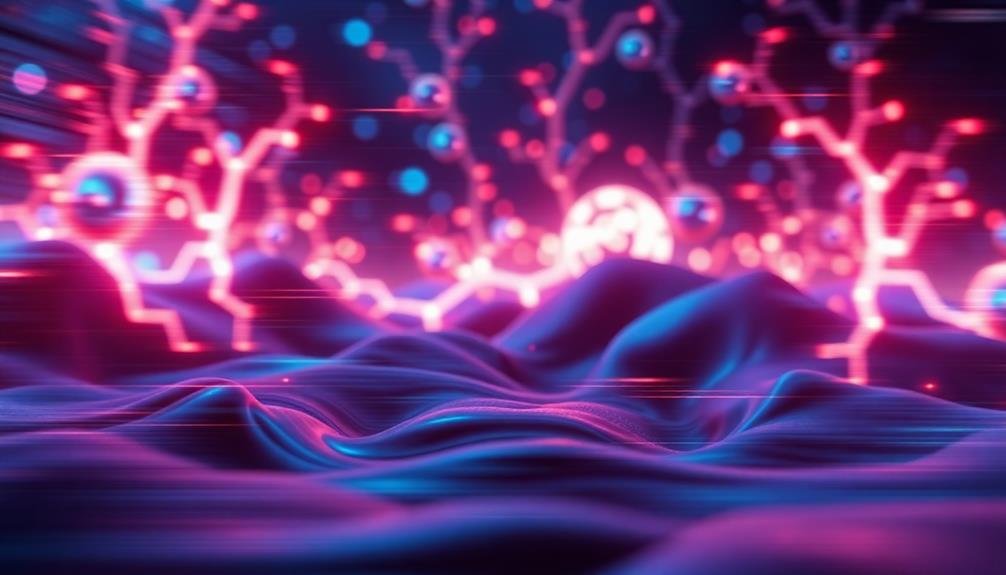
The psychology behind parallax movement taps into our innate visual perception mechanisms. When you see objects moving at different speeds relative to each other, your brain automatically processes depth and spatial relationships. This phenomenon mimics how you naturally perceive the world around you, creating a sense of realism and immersion in cinematic experiences.
Parallax movement engages your peripheral vision, which is highly sensitive to motion. As your eyes track the main subject, the varying speeds of background elements create a subtle but compelling sense of depth. This triggers your brain's spatial awareness, making you feel more present in the scene.
The effect also plays on your expectations of motion. When objects move as they'd in real life, it reinforces the illusion of a three-dimensional space on a two-dimensional screen. This subconscious confirmation of your expectations enhances your emotional engagement with the content.
Moreover, parallax movement can direct your attention subtly. By controlling the speed and direction of different elements, filmmakers can guide your focus without obvious cuts or camera movements, creating a more seamless and immersive viewing experience.
Parallax Techniques for Drone Operators
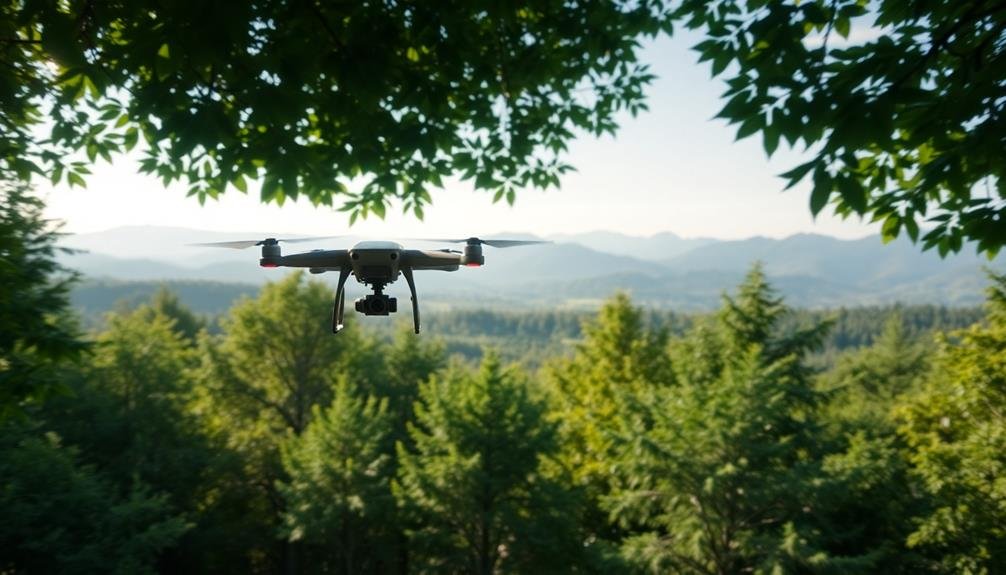
Drone operators can harness the power of parallax movement to create stunning visual effects. To achieve this, you'll want to master several key techniques.
First, try flying your drone laterally while maintaining focus on a stationary subject. This creates a sense of depth as foreground elements move faster than the background. You can enhance this effect by flying at different altitudes, adjusting your speed, and varying your distance from the subject.
Another effective technique is to use vertical parallax. Ascend or descend your drone while keeping your camera fixed on the subject. This creates a unique perspective shift that can add drama to your shots.
Don't forget to experiment with diagonal movements, combining lateral and vertical motions for more complex parallax effects.
When shooting buildings or structures, try orbiting around them while adjusting your altitude. This technique showcases multiple angles and emphasizes the subject's three-dimensionality.
For landscape shots, consider using slow, sweeping movements to reveal layers of depth in the scenery. Remember to maintain smooth, controlled motions throughout your flight to guarantee professional-looking results.
With practice, you'll develop an intuitive sense of how to use parallax to elevate your drone cinematography.
Equipment Needed for Parallax Shots
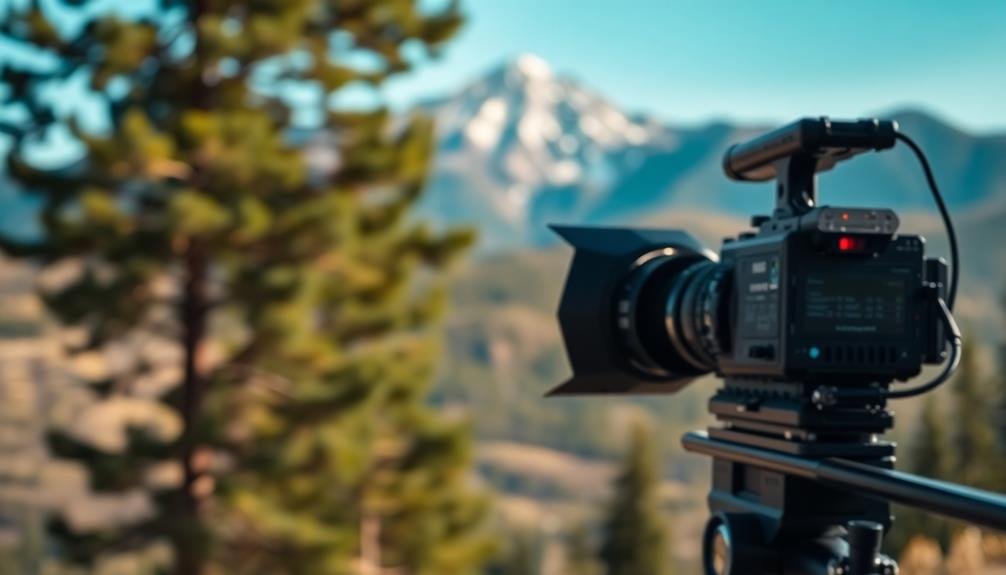
To capture stunning parallax shots, you'll need to invest in essential camera gear and motion control systems.
Your camera setup should include a high-quality DSLR or mirrorless camera with manual controls, along with wide-angle and telephoto lenses to vary your perspective.
For smooth and precise movement, consider adding a motorized slider, gimbal, or motion control rig to your toolkit.
Essential Camera Gear
Capturing stunning parallax shots requires more than just a keen eye and creative vision. You'll need the right gear to bring your ideas to life. At the core of your setup, you'll want a high-quality camera capable of shooting in manual mode. This allows you to control every aspect of your shot, from exposure to focus.
A sturdy tripod is essential for maintaining stability during your movements. Look for one with a fluid head for smooth pans and tilts. To achieve that signature parallax effect, you'll need a slider or dolly. These tools enable you to create precise, controlled camera movements.
Here's a breakdown of essential camera gear for parallax shots:
| Equipment | Purpose | Recommended Type |
|---|---|---|
| Camera | Image capture | DSLR or mirrorless |
| Tripod | Stability | Fluid head, carbon fiber |
| Slider/Dolly | Linear movement | Motorized for consistency |
| Lenses | Framing and depth of field | Wide-angle and prime lenses |
Don't forget about accessories like ND filters to control light and a remote shutter release for hands-free operation. With this gear, you'll be well-equipped to create enthralling parallax shots that add depth and dimension to your cinematography.
Motion Control Systems
Motion control systems elevate parallax shots to new heights of precision and repeatability. These sophisticated setups allow you to program complex camera movements with exacting control over speed, timing, and positioning.
You'll find various types of motion control systems, from small, portable units to large, studio-grade rigs. For basic parallax shots, you might opt for a motorized slider with programmable movement. These systems let you set start and end points, control speed, and even add acceleration or deceleration.
More advanced setups incorporate multi-axis control, enabling simultaneous pan, tilt, and slide movements. If you're aiming for highly intricate shots, consider investing in a full motion control rig. These systems offer unparalleled precision, allowing you to repeat complex movements perfectly across multiple takes.
They're especially useful for VFX work, where consistency between shots is essential. Don't forget about motion control software. It's the brain behind your hardware, allowing you to fine-tune movements, synchronize multiple axes, and even integrate with other production elements like lighting or practical effects.
With the right motion control system, you'll be able to create stunning parallax shots that captivate your audience and elevate your cinematography.
Planning Your Parallax Flight Path
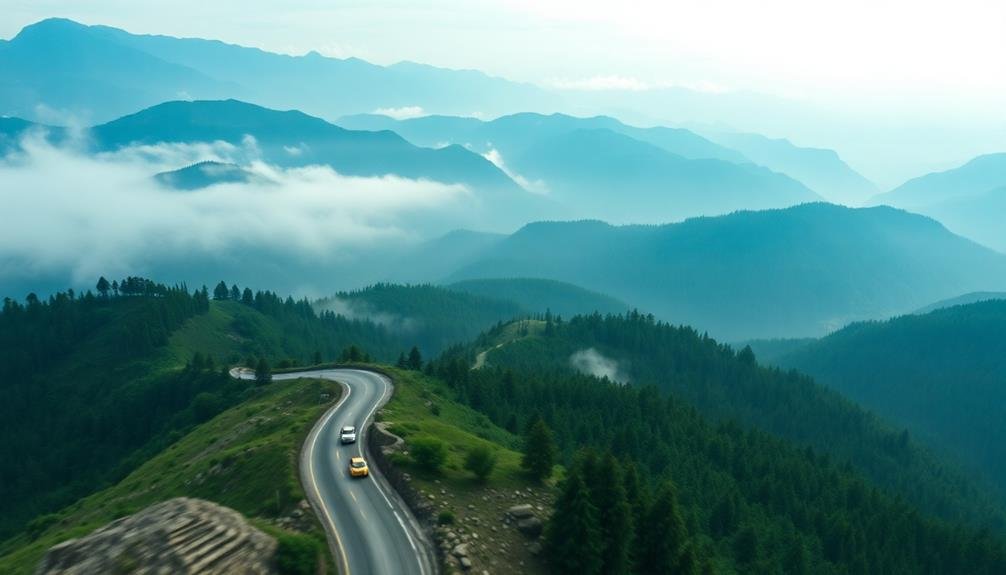
To create effective parallax shots, you'll need to carefully map out your camera's movement trajectory.
Consider the relationships between foreground and background elements, planning how they'll shift relative to each other as you move.
Map Camera Movement Trajectory
In order to create compelling parallax effects, you'll need to carefully plan your camera's movement trajectory. Start by sketching out your scene's layout, including foreground, midground, and background elements. Identify key points of interest and visualize how they'll interact as the camera moves.
Next, determine your camera's path. Will it be a simple linear movement, or a more complex curve? Consider how different trajectories will affect the parallax effect and overall visual impact. Don't forget to factor in the speed of movement; slower motion often enhances the parallax effect.
Use reference points in your scene to guide your camera's path. These can be physical markers on set or digital guides in post-production. Pay attention to how objects at different distances move in relation to each other as you map out the trajectory.
Experiment with various angles and heights for your camera movement. A slight change in elevation can dramatically alter the parallax effect.
Remember to maintain smooth, consistent motion throughout your planned trajectory to avoid jarring shifts that could break the illusion of depth.
Optimize Foreground-Background Relationships
Once you've mapped your camera's trajectory, it's time to fine-tune the relationships between foreground and background elements. This step is essential for creating a compelling parallax effect that draws viewers into your scene. Consider the depth and spacing of objects in your frame, and how they'll interact as the camera moves.
Start by identifying key elements in your foreground, midground, and background. Arrange these elements to create layers of depth, ensuring that each layer moves at a different speed relative to the camera. This contrast in movement speeds is what creates the parallax effect.
| Layer | Movement Speed | Visual Impact |
|---|---|---|
| Foreground | Fastest | High |
| Midground | Moderate | Medium |
| Background | Slowest | Low |
As you optimize these relationships, pay attention to how objects frame one another. Use foreground elements to reveal or obscure background elements strategically. This technique can create intrigue and guide the viewer's eye through the scene. Don't be afraid to experiment with different arrangements and movement speeds to find the most visually striking combination. Remember, the goal is to create a sense of depth and dimension that enhances your story and captivates your audience.
Adjusting Speed for Optimal Effect
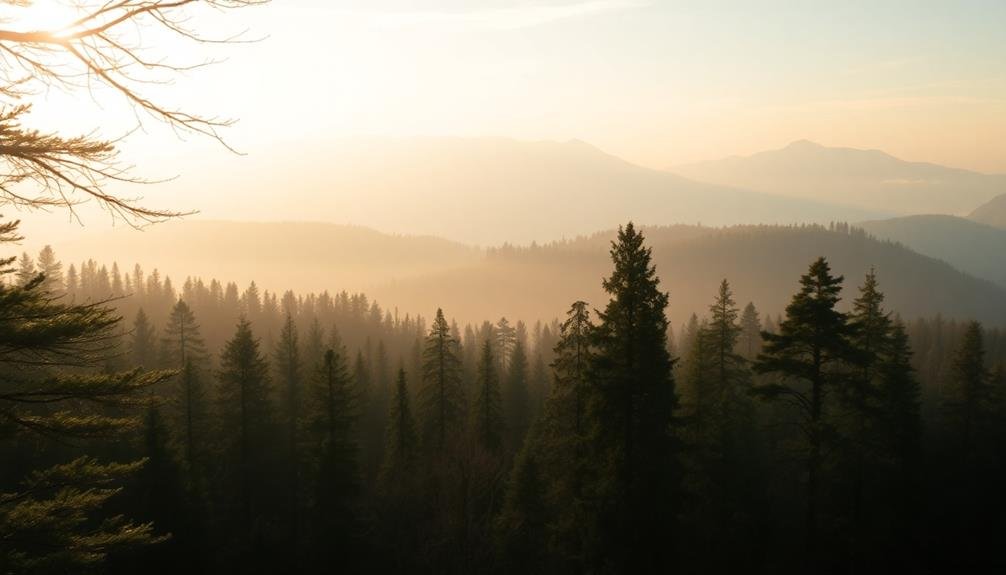
Speed plays an essential role in creating effective parallax and cinematic movement. When adjusting speed for ideal effect, you'll need to take into account the relationship between foreground and background elements. Slower-moving backgrounds create a sense of depth and distance, while faster-moving foreground objects enhance the feeling of motion and immediacy.
To achieve the best results, experiment with different speeds for various layers in your composition. You'll want to find the right balance that creates a believable sense of movement without overwhelming the viewer. Remember that subtle speed differences can often produce the most natural-looking parallax effects.
Take into account these factors when adjusting speed:
- Distance from the camera: Objects closer to the camera should move faster
- Relative size of elements: Larger objects typically appear to move more slowly
- Desired emotional impact: Faster speeds can create excitement, while slower speeds evoke calmness
- Scene context: Match speed to the overall mood and narrative of your shot
Layering Elements in Parallax Shots
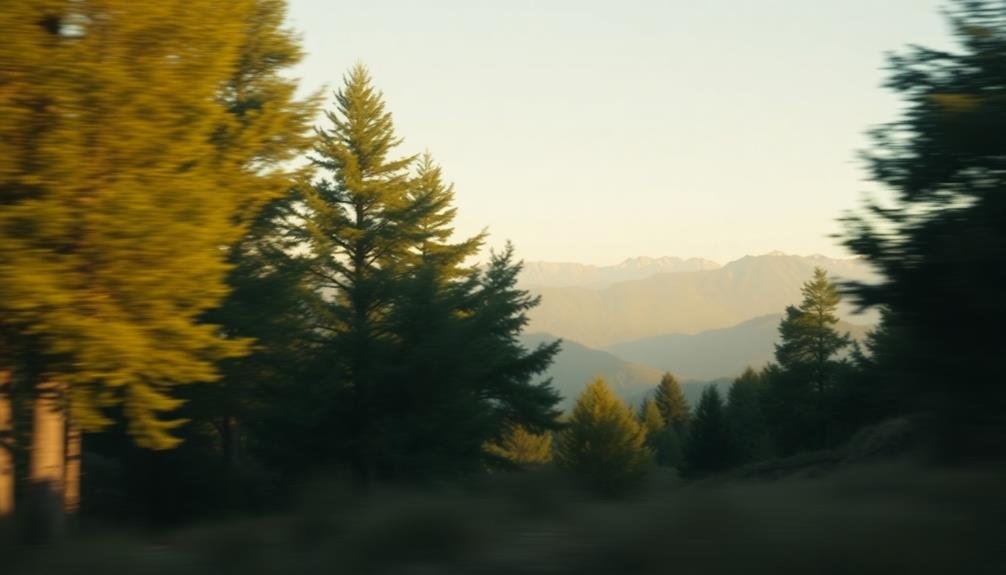
Depth and dimension come to life through skillful layering in parallax shots. To create this effect, you'll need to separate your scene into distinct planes.
Start with your background layer, which typically moves the slowest. This could be a distant landscape, sky, or static element. Next, add middle-ground elements that move at a moderate pace. These might include buildings, trees, or larger objects in the scene.
Your foreground layer should contain elements closest to the camera, moving the fastest to create a strong sense of depth. Consider adding multiple foreground layers for increased complexity.
As you compose your shot, guarantee each layer has clear separation and doesn't overlap awkwardly. Pay attention to the relative speeds of your layers. The contrast between slow-moving backgrounds and fast-moving foregrounds enhances the parallax effect.
Experiment with different combinations to find the most visually appealing arrangement. Don't forget to incorporate elements that bridge the gaps between layers. This creates a smoother shift and more cohesive overall look.
Post-Production Enhancements for Parallax
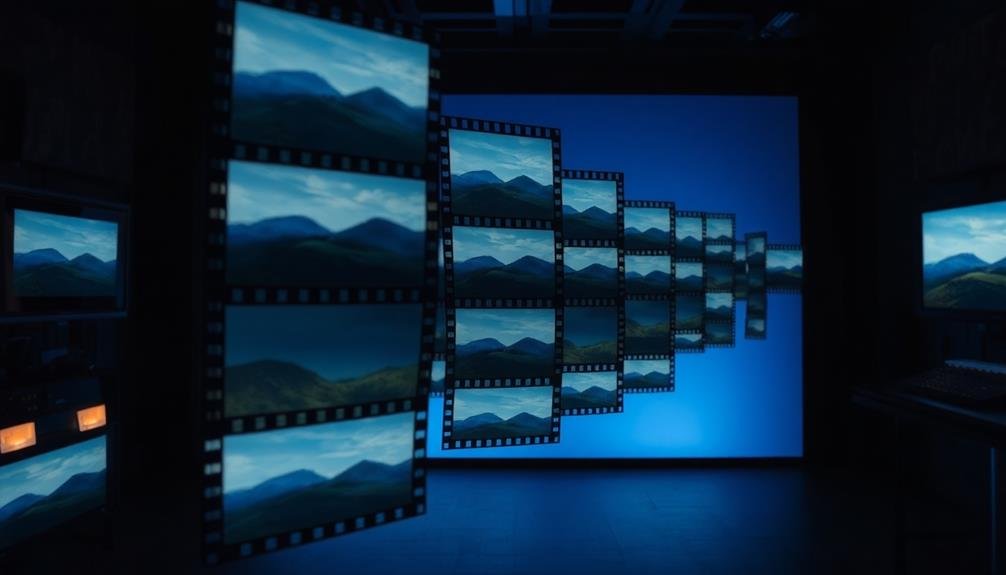
Post-production offers numerous opportunities to enhance and refine your parallax shots. With digital tools at your disposal, you can fine-tune the movement, timing, and overall effect of your parallax elements.
Start by adjusting the speed and trajectory of individual layers to create a more dynamic and fluid motion. You'll often find that subtle tweaks can markedly improve the visual impact.
Color grading plays an essential role in enhancing parallax shots. By adjusting the contrast, saturation, and hue of different layers, you can create depth and separation between elements.
Don't shy away from experimenting with atmospheric effects like fog or haze to add dimension and mood to your scene.
Consider these post-production techniques to elevate your parallax shots:
- Motion blur application for smoother movement
- Keyframing for precise control over layer animation
- Masking to blend layers seamlessly
- Particle effects to add texture and atmosphere
Common Parallax Mistakes to Avoid
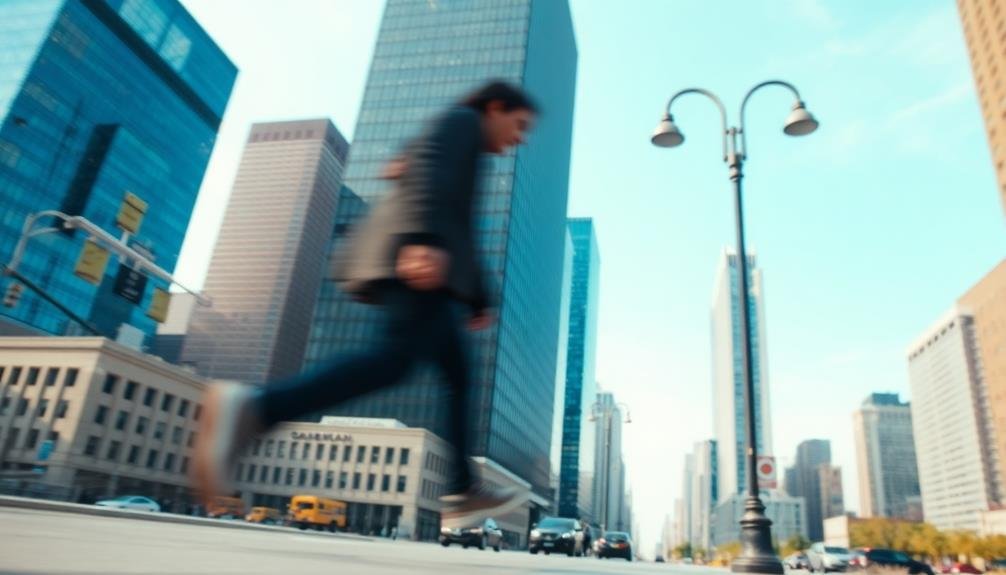
While parallax effects can enhance visual storytelling, you'll want to avoid overusing them in your cinematic projects.
Excessive parallax can disorient viewers and detract from your narrative, so use it sparingly and purposefully.
Additionally, make certain your parallax elements are responsive on mobile devices, as neglecting this aspect can lead to poor user experience and limit your audience reach.
Overusing Parallax Effects
When it comes to parallax effects, more isn't always better. While this technique can create stunning depth and movement in your cinematography, overusing it can quickly become distracting and even nauseating for your audience.
You'll want to strike a balance between visual interest and viewer comfort. Remember that parallax is a tool, not the main attraction. Use it strategically to enhance your storytelling, not overshadow it.
Pay attention to your audience's feedback and watch for signs of visual fatigue. If viewers are complaining about dizziness or struggling to focus on the content, you've likely overdone the parallax.
To avoid overusing parallax effects, consider these tips:
- Use parallax selectively for key scenes or shifts
- Vary the speed and intensity of parallax movements
- Combine parallax with static shots for visual relief
- Limit the number of layers moving at different speeds
Ignoring Mobile Responsiveness
A common pitfall in implementing parallax effects is neglecting mobile responsiveness. When you design a stunning parallax website for desktop users, it's easy to forget that many visitors will access your site on smartphones or tablets.
Failing to optimize for these devices can lead to slow loading times, distorted layouts, and a frustrating user experience.
To avoid this mistake, always test your parallax effects across various screen sizes and devices. You'll need to adjust the intensity of the effect for smaller screens, as subtle movements often work better on mobile.
Consider disabling parallax altogether for certain mobile devices to guarantee smooth performance.
Remember to use responsive design techniques, such as fluid grids and flexible images. Implement media queries to adapt your layout and parallax effects based on screen size.
Pay attention to file sizes and optimize images to reduce load times on mobile networks.
Cinematic Examples of Drone Parallax
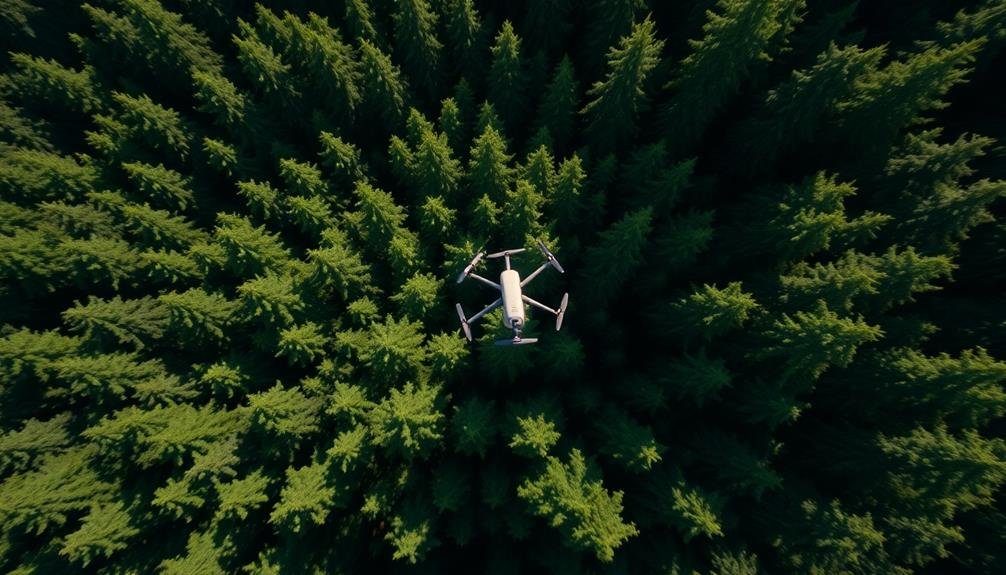
Drones have revolutionized the way filmmakers create parallax effects in modern cinema. You'll often see sweeping aerial shots that glide over landscapes, revealing depth and dimension as foreground elements move faster than distant objects. This technique adds a sense of scale and grandeur to scenes, immersing viewers in the environment.
When watching films or TV shows, look for these drone-captured parallax shots:
- Slow, smooth movements over cityscapes, showcasing skyscrapers against distant mountains
- Gradual reveals of hidden locations as the drone rises above obstacles
- Low-altitude flights through forests, with trees creating layered depth
- Orbiting shots around structures, emphasizing their three-dimensional form
You'll notice how these shots create a sense of movement and progression, even in static scenes. The parallax effect from drone footage can establish geography, highlight important elements, and guide the viewer's eye through complex environments.
It's particularly effective in establishing shots, changes, and moments of heightened drama or revelation. By mastering drone parallax, filmmakers can add a cinematic quality to their work that was once only achievable with expensive crane or helicopter shots.
Future Trends in Parallax Cinematography
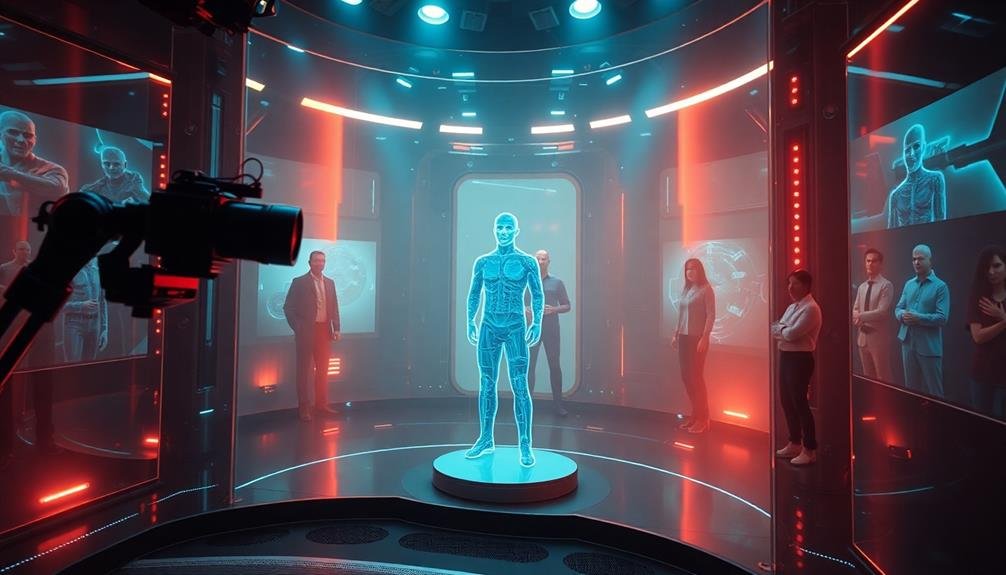
As technology continues to evolve, parallax cinematography is poised for exciting developments.
You'll see an increase in the use of advanced motion control systems, allowing for more precise and complex camera movements. These systems will enable cinematographers to create intricate parallax effects that were previously impossible or too time-consuming to achieve.
Virtual production techniques will also play a significant role in the future of parallax cinematography.
You'll witness more filmmakers using LED walls and real-time rendering to create dynamic backgrounds that respond to camera movement, enhancing the parallax effect in-camera. This approach will blend practical and digital elements seamlessly, offering new creative possibilities.
AI-powered camera systems will revolutionize how you capture parallax shots.
These intelligent systems will anticipate and adjust for movement, automatically creating ideal parallax effects based on the scene's composition and desired mood. You'll also see advancements in post-production software, making it easier to add or enhance parallax effects in post.
Lastly, expect to see parallax techniques being applied more frequently in virtual and augmented reality experiences, creating a heightened sense of depth and immersion for viewers.
Frequently Asked Questions
How Does Parallax Differ From Other Camera Movement Techniques?
You'll find parallax unique among camera movements. It creates depth by showing foreground and background moving at different speeds. Unlike pans or dolly shots, parallax reveals multiple layers simultaneously, enhancing the viewer's spatial perception.
Can Parallax Be Effectively Used in Indoor Cinematography?
You can definitely use parallax effectively indoors. It's great for revealing depth in confined spaces. Try moving the camera laterally past foreground objects to create a dynamic sense of space in interior shots.
What Are the Limitations of Parallax in Storytelling?
You'll find parallax has limitations in storytelling. It can't convey complex emotions or dialogue. Overuse may distract viewers from the plot. It's best used sparingly to enhance visual impact rather than drive narrative development.
How Does Parallax Affect the Viewer's Perception of Time in a Scene?
Parallax can alter your perception of time in a scene. As you watch objects move at different speeds, it creates a sense of depth and duration. You'll feel time stretch or compress based on the layered movement.
Are There Any Genres Where Parallax Should Be Avoided or Used Sparingly?
You'll want to use parallax sparingly in documentary films, news broadcasts, and some experimental genres. It's best avoided when realism is key or when you're aiming for a more static, observational style in your cinematography.
In Summary
You've now explored the enthralling world of parallax in drone cinematography. By understanding its psychological impact and mastering various techniques, you're equipped to create stunning visual experiences. Remember to plan your flights carefully, invest in the right gear, and refine your shots in post-production. As you avoid common pitfalls and draw inspiration from cinematic examples, you'll be ready to push the boundaries of parallax. Keep an eye on emerging trends to stay ahead in this dynamic field.

As educators and advocates for responsible drone use, we’re committed to sharing our knowledge and expertise with aspiring aerial photographers.




Leave a Reply